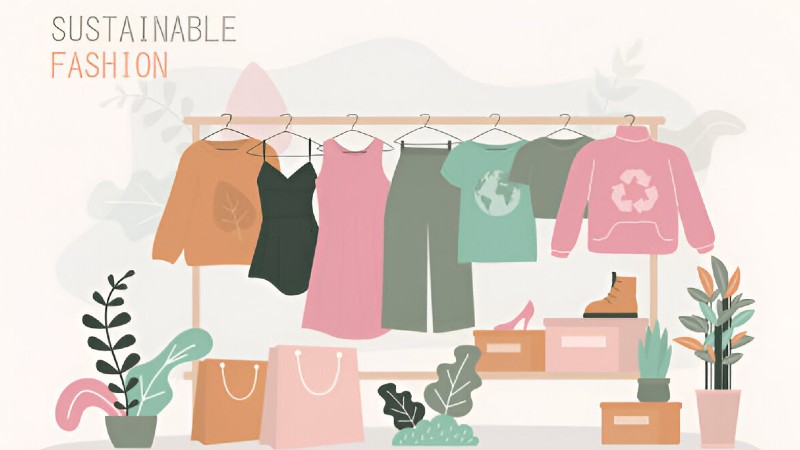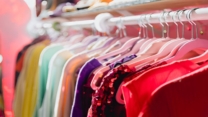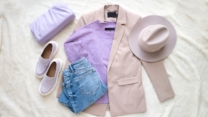
Sustainable Fashion Brands to Watch: Dressing with a Purpose
In a world increasingly conscious of environmental and social responsibility, sustainable fashion has shifted from niche to mainstream. Consumers are no longer content with clothing that simply looks good—they demand garments that align with ethical labor practices, eco-friendly materials, and circular economy principles. But sustainability isn’t just a trend; it’s a movement that challenges the fashion industry to rethink production, design, and consumption.
Why Sustainable Fashion Matters
The fashion industry is one of the largest polluters globally. According to the United Nations Environment Programme, the industry generates approximately 10% of global carbon emissions and consumes vast amounts of water—nearly 79 billion cubic meters annually. Fast fashion, in particular, contributes heavily to textile waste, with 92 million tons of waste produced yearly.
Sustainable fashion aims to combat these issues by focusing on:
- Eco-friendly materials: Organic cotton, recycled polyester, hemp, and Tencel lyocell.
- Ethical labor: Fair wages, safe working conditions, and artisan empowerment.
- Minimal waste: Made-to-order production, circular recycling programs, and innovative textile recycling.
Emerging Trends in Sustainable Fashion
While traditional sustainability practices are vital, forward-thinking brands are incorporating:
- AI and digital design: Brands like Sumissura and Hockerty use AI-assisted tailoring to reduce textile waste and create made-to-measure garments.
- Regenerative textiles: Hemp, alpaca wool, and other regenerative fibers actively improve soil quality and capture carbon.
- Transparency dashboards: Consumers can track the lifecycle of garments from raw materials to finished product, enhancing accountability.
- Circular business models: Companies such as Mud Jeans and Nudie Jeans offer repair, resale, and recycling programs to extend the life of clothing.
Top Sustainable Fashion Brands to Watch in 2025
Here are some brands leading the charge, with examples of their innovative practices and products.
1. Sumissura
Sumissura combines traditional tailoring with AI technology to offer made-to-measure clothing. This made-to-order model eliminates overproduction, reducing waste significantly. Additionally, their latest lookbooks integrate AI-generated imagery, cutting down carbon emissions by over 90%.
- Products: Custom suits, dresses, and shoes
- Sustainability Focus: Made-to-order, fair labor, carbon-reducing digital marketing
2. Patagonia
Known as a pioneer in sustainable outdoor apparel, Patagonia uses recycled and Fair Trade-certified materials, durable designs, and environmental activism. Their donation of 98% of company stock to the Holdfast Collective underscores a strong commitment to global sustainability.
- Products: Jackets, fleeces, outdoor gear
- Sustainability Focus: Fair labor, recycled materials, environmental advocacy
3. Paka
Paka specializes in alpaca wool clothing, a natural, renewable, and regenerative fiber. Alpaca wool is lightweight, thermo-regulating, and biodegradable. The brand also supports community development in Peru through direct partnerships and B Corp certification.
- Products: Sweaters, puffer jackets, hoodies
- Sustainability Focus: Regenerative fibers, B Corp-certified, local community support
4. Girlfriend Collective
Specializing in activewear, Girlfriend Collective uses recycled water bottles and fishing nets to create soft, durable fabrics. Their transparent supply chain and 100% recyclable packaging make them a model for eco-conscious athleisure.
- Products: Leggings, bras, outerwear
- Sustainability Focus: Circular materials, recycling, transparency
5. Everlane
Everlane emphasizes radical transparency, reporting on factory conditions, material sourcing, and environmental impact. Nearly all polyester and nylon used is recycled, and their LEED-certified factories recycle water and reduce emissions.
- Products: Jeans, sneakers, jackets, basics
- Sustainability Focus: Transparency, recycled fibers, water-efficient production
Comparing Key Sustainability Practices
| Brand | Core Materials | Ethical Practices | Innovative Sustainability |
|---|---|---|---|
| Sumissura | Cotton, linen, wool blends | Fair labor, made-to-order | AI-assisted design to reduce emissions |
| Patagonia | Recycled polyester, organic cotton | Fair Trade factories | Environmental activism, donation initiatives |
| Paka | Alpaca wool | B Corp-certified, community support | Regenerative fibers improving soil health |
| Girlfriend Collective | Recycled polyester, nylon | Transparent supply chain | Circular materials from waste products |
| Everlane | Recycled polyester, cotton, nylon | Factory audits, fair conditions | Water and energy-efficient manufacturing |
How Technology is Shaping Sustainable Fashion
Beyond materials, technology is revolutionizing how brands minimize their environmental impact and engage consumers:
- AI Design Tools: Brands like Sumissura use AI to generate pattern layouts that reduce fabric waste.
- Virtual Try-Ons: Augmented reality apps allow consumers to visualize outfits before purchase, reducing returns and shipping emissions.
- Blockchain Transparency: Tracking every stage of a garment’s lifecycle ensures ethical sourcing and production accountability.
Consumer Empowerment
One of the most significant shifts in sustainable fashion is empowering consumers to make informed choices. Dressing with purpose goes beyond buying eco-friendly products—it involves:
- Mindful purchasing: Considering quality over quantity, investing in durable pieces.
- Clothing care: Washing less, using cold water, and repairing instead of discarding.
- Resale and recycling: Participating in circular economy programs to extend garment life.
According to a 2025 report by Remake, 68% of consumers prefer brands with transparent supply chains, and 55% actively check sustainability certifications before purchasing. These statistics highlight the growing influence of informed consumers in shaping the future of fashion.
Social and Environmental Responsibility
Sustainable fashion is not just about eco-friendly textiles; social impact is equally crucial. Brands like Paka and Able ensure fair wages and safe working conditions, empowering local communities. Patagonia and Cotopaxi go a step further by contributing to environmental and social causes, linking fashion consumption directly with positive societal outcomes.
Tips for Choosing Truly Sustainable Fashion Brands
Not all green claims are credible. Avoid falling for marketing tactics by following these guidelines:
- Look for certifications: GOTS, GRS, B Corp, LEED, Bluesign.
- Research transparency: Check supply chain reports and factory audits.
- Evaluate materials: Prefer organic, recycled, biodegradable, or regenerative fibers.
- Consider lifespan: Prioritize durable garments over disposable fast fashion.
Conclusion
Sustainable fashion is evolving rapidly, integrating technology, regenerative materials, and consumer empowerment to create a more responsible industry. Brands like Sumissura, Patagonia, Paka, Girlfriend Collective, and Everlane illustrate that style, innovation, and sustainability can coexist. By choosing these brands and adopting mindful fashion habits, consumers can make a meaningful impact—dressing not only for themselves but for the planet and future generations.
Dressing with purpose is no longer a niche choice; it is becoming the standard for fashion-conscious, socially aware consumers in 2025.
Frequently Asked Questions (FAQs)
What makes a fashion brand truly sustainable?
A sustainable fashion brand prioritizes eco-friendly materials, fair labor practices, and minimal environmental impact. Look for certifications such as GOTS, GRS, B Corp, and Bluesign to ensure authenticity.
Are sustainable fashion brands more expensive than fast fashion?
While some sustainable brands have higher upfront costs, their garments are typically more durable, ethically produced, and environmentally responsible, which offers long-term value and reduces waste.
Can sustainable fashion be stylish and versatile?
Absolutely. Brands like Sumissura, Reformation, and Everlane combine modern design with eco-conscious practices, offering stylish, versatile pieces for everyday wear.
How can I extend the life of my sustainable clothing?
- Wash clothes less frequently and use cold water.
- Repair damaged garments instead of discarding them.
- Participate in recycling or resale programs.
How do I know if a brand’s sustainability claims are real?
Check for transparency in supply chain reporting, verified certifications, and clear environmental impact initiatives. Trusted brands provide detailed information on materials, manufacturing, and social responsibility efforts.
What are emerging trends in sustainable fashion?
Technology-driven customization, regenerative fibers, circular business models, and transparent supply chain dashboards are shaping the future of eco-conscious fashion.












